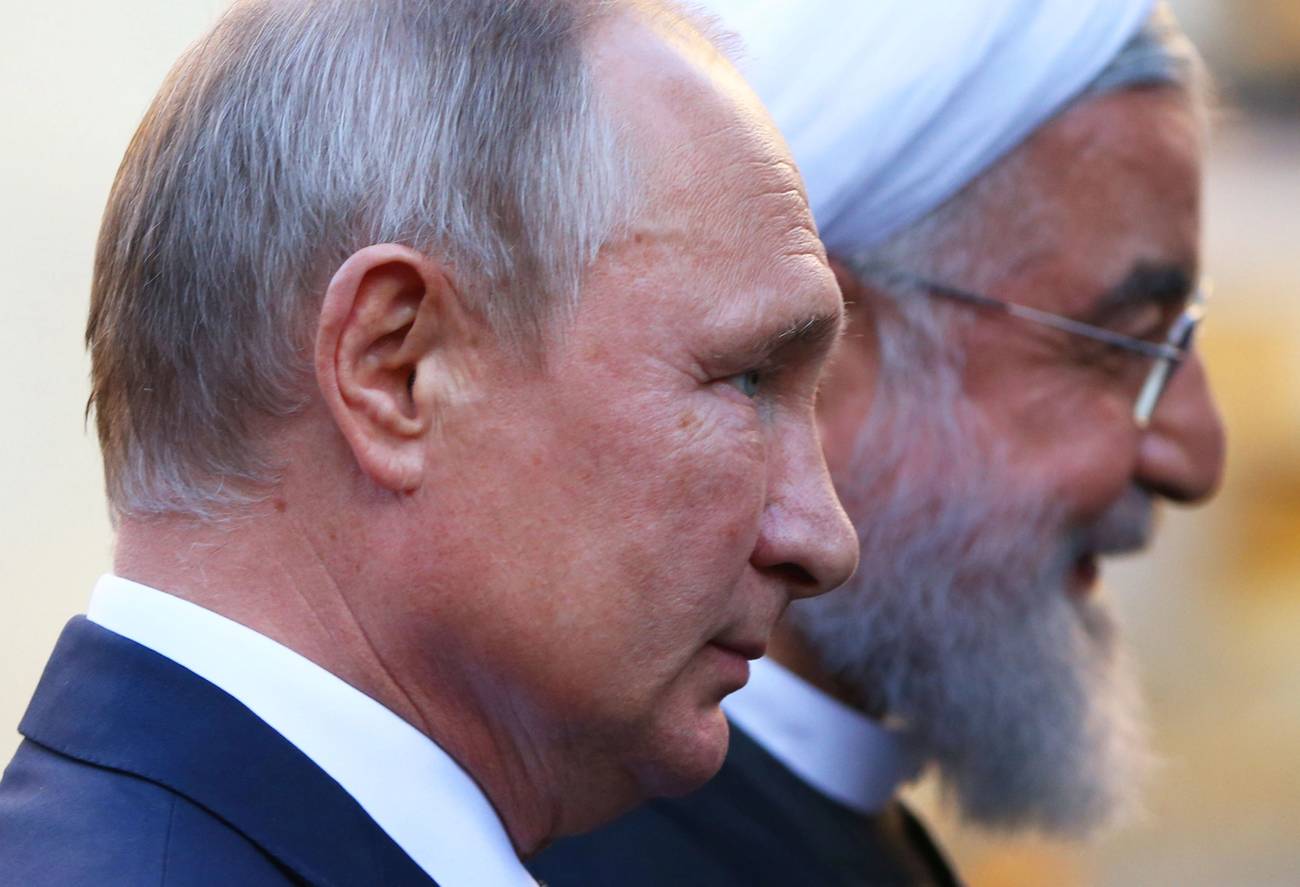 Chłopcy z Młodzieży Niemieckiej głaszczą świnię z prosiętami w schronisku młodzieżowym w rejonie Vogtland, 1937 r. (Fot. Berliner Verlag/Archiv / AP Photo)
Chłopcy z Młodzieży Niemieckiej głaszczą świnię z prosiętami w schronisku młodzieżowym w rejonie Vogtland, 1937 r. (Fot. Berliner Verlag/Archiv / AP Photo)
 Każda świnia miała służyć Hitlerowi
Każda świnia miała służyć Hitlerowi
Joanna Banaś
Naziści lubili podkreślać, że jako jedyni na świecie przyzwoicie traktują zwierzęta. Ale w Trzeciej Rzeszy były one tylko przedmiotami używanymi w walce o zwycięstwo nad światem.
.
Hitler gardził zorganizowanymi polowaniami, ale nie miał nic przeciwko kłusownictwu. Wegetarianin ze względów zdrowotnych, który rosół nazywał „trupią herbatą”, nie zabraniał swojemu otoczeniu jeść mięsa. Tyle że chętnie dręczył współbiesiadników drastycznymi relacjami z wizyt w rzeźniach w Ukrainie. Pozwalał się filmować podczas zabawy ze swoimi owczarkami niemieckimi, oczywiście czystej krwi, ale przed swoim samobójstwem bez mrugnięcia zgodził się na przetestowanie skuteczności cyjanowodoru na ukochanej Blondi. Czy można więc nazwać go miłośnikiem zwierząt, choć na takiego się kreował?
Niemiecki dziennikarz Jan Mohnhaupt w książce „Zwierzęta w Trzeciej Rzeszy” obnaża obłudę nazistowskiej propagandy. Oto jeden z przykładów: w 1938 r. obok KL Buchenwald wybudowano mały ogród zoologiczny, miejsce relaksu dla zestresowanych strażników i administracji obozu. Zwierzęta do ogrodu kupowano za pieniądze zarabiane przez więźniów pracujących przymusowo. Jeśli któreś padło, jego opiekun był surowo karany, a wszyscy więźniowie płacili „dobrowolną” składkę na zakup nowego zwierzęcia. Gdy pod koniec wojny zapanował głód, zwierzęta tego nie odczuły, bo karmiono je mięsem z puli dla więźniów. Niedźwiedzie okazały się wyjątkowo wdzięczne komendantowi obozu – gdy SS-Standartenführer Karl Koch dla zabawy kazał wrzucać do ich wybiegu jakiegoś więźnia, zręcznie rozszarpywały jego ciało na kawałki.
Zwierzęta w Trzeciej Rzeszy
Od wilka po stonkę – naziści traktowali instrumentalnie wszystkie zwierzęta.
Wilk, mimo nadawanego mu w Trzeciej Rzeszy znaczenia symbolicznego (nieprzypadkowo kwatery główne Hitlera nosiły nazwy z nim związane – Wilczy Szaniec, Wilczy Jar czy Wilkołak), pozostawał jednym z głównych celów myśliwych.
Celowo głodzone psy miały pomagać strażnikom w obozach koncentracyjnych. Nie tylko łapać ewentualnych uciekinierów, ale i być narzędziem terroru i tortur – na rozkaz rzucały się na więźniów.
 Adolf Hitler ze swoim owczarkiem niemieckim Blondi, 1942 r.
Adolf Hitler ze swoim owczarkiem niemieckim Blondi, 1942 r.
Świnie, jedząc najlepiej tylko odpadki (o ziemniaki w warunkach wojennych rywalizowały z ludźmi), miały nie tylko przybierać na wadze i dawać Niemcom ich ukochane mięso, ale i służyć jako dowód rasowej wyższości Aryjczyków jedzących wieprzowinę w przeciwieństwo do Żydów i muzułmanów.
Jedwabniki wykorzystywano jako narzędzie dydaktyczne do kształtowania umysłów młodych Niemców – dzieci w szkołach karmiły gąsienice liśćmi morwy, a kokony odnosiły do punktów skupu. Wszystko po to, by niemieckim lotnikom nie zabrakło jedwabiu na spadochrony. Przy okazji uczniowie w praktyce stosowali narodowosocjalistyczną doktrynę o czystości rasy, odpowiednio wcześnie eliminując osobniki chore i słabe. Z kolei na przykładzie stonki ziemniaczanej, która była usuwana z pól również rękami dzieci, uczniowie dowiadywali się, jak należy traktować Żydów, którzy też mieli być szkodnikami.
Koty budziły w nazistach mieszane uczucia. Niektórzy chwalili ich zamiłowanie do polowania na myszy i szczury, ale większość chciała je wytępić.
W 1942 r. zakazano Żydom posiadania zwierząt domowych, wśród których większość stanowiły koty. W praktyce przepis oznaczał, że musieli oni skazać je na śmierć: oddać na posterunek policji, albo – co było nielegalne – samodzielnie zorganizować jego eutanazję.
Jelenie specjalnie karmiono, by ich okazałe poroże wzbudziło zainteresowanie pierwszego myśliwego Trzeciej Rzeszy Hermanna Göringa.
Konie po wybuchu wojny ciągnęły na wschód całe wyposażenie armii (tylko na filmach propagandowych niemieckie oddziały były całkowicie zmotoryzowane), by później służyć za prowiant: od jesieni 1941 r. sowieccy jeńcy wojenni byli karmieni końską padliną, a pod Stalingradem Niemcy zabili 4 tys. koni rumuńskiej kawalerii. Zupę z nich rozdali swoim żołnierzom.
Wygody dla niemieckich świń
Choć zgrabnie napisana i zawierająca mnóstwo ciekawych didaskaliów, książka Mohnhaupta nie jest lekturą przyjemną. Nie mogła być, bo w stosunku nazistów do żywych istot nie było niczego dobrego.
Jeśli nawet przejmowali się losem niektórych zwierząt, robili to dla własnej korzyści – ekonomicznej, militarnej czy propagandowej. Jak przy wojennej instrukcji transportu świń: zwierzęta miały być przed dłuższą podróżą nakarmione i napojone, wagony wentylowane, a do każdego z nich należało wprowadzać tylko tyle świń, żeby każda mogła się wygodnie ułożyć. Uwzględniono nawet przestrogi czasopisma branżowego dla hodowców trzody chlewnej, by podczas upałów nie transportować przekarmionych zwierząt, ponieważ grozi im zawał.
Pięknie, tyle że do tych samych wagonów bezlitośnie upychano ludzi transportowanych do obozów koncentracyjnych.
Jan Mohnhaupt – „Zwierzęta w Trzeciej Rzeszy”
Tłum. Monika Kilis, Wydawnictwo Poznańskie
 Jan Mohnhaupt, ‘Zwierzęta w Trzeciej Rzeszy’, przekł. Monika Kilis
Jan Mohnhaupt, ‘Zwierzęta w Trzeciej Rzeszy’, przekł. Monika Kilis
Zawartość publikowanych artykułów i materiałów nie reprezentuje poglądów ani opinii Reunion’68,
ani też webmastera Blogu Reunion’68, chyba ze jest to wyraźnie zaznaczone.
Twoje uwagi, linki, własne artykuły lub wiadomości prześlij na adres:
webmaster@reunion68.com




